Building of the Day: 567-571 Fulton Street
Brooklyn, one building at a time. Name: Cast iron front stores Address: 567-571 Fulton Street Cross Streets: Bond Street, Flatbush Avenue Extension and DeKalb Avenue Neighborhood: Downtown Brooklyn Year Built: 1869-1870 Architectural Style: Italianate Architect: Unknown Landmarked: No, but should be, and soon The story: If you want to know what Brooklyn’s first and best…

Brooklyn, one building at a time.
Name: Cast iron front stores
Address: 567-571 Fulton Street
Cross Streets: Bond Street, Flatbush Avenue Extension and DeKalb Avenue
Neighborhood: Downtown Brooklyn
Year Built: 1869-1870
Architectural Style: Italianate
Architect: Unknown
Landmarked: No, but should be, and soon
The story: If you want to know what Brooklyn’s first and best shopping and entertainment hub looked like in the boom years after the Civil War, you have to go no further than this part of Fulton Street, near Flatbush Avenue. But you better look quickly, because the way things are going, it won’t be here for much longer. These buildings are living on death row, as this site is a prime development area for the New Brooklyn.
Often, our attention is further up Fulton Street, near Borough Hall and Brooklyn Heights, which probably saved these buildings in the first place. As Brooklyn developed away from the piers and harbor, Fulton Street became the main street for commerce and entertainment. Before the large department stores of the last decade of the 19th century were built, these cast-iron commercial buildings filled Fulton Street, home to stores, often with more retail space, offices and warehouse space above.
Cast iron has been used as façade material in New York City since the 1850s. It was an economical and practical way to design and build ornate Italianate palazzo-style commercial buildings without the cost or craftsmanship of stone. It was lightweight and touted as fire resistant. The cast iron elements were cast locally, and could be made to order or chosen from a catalogue, and came in manageable sized pieces that were bolted to the brick buildings underneath. The plates could then be painted to resemble stone, or other metals. Cast iron architecture lent itself to larger windows, often with elaborate arches, often a series of colonnades and arcades, depending on the size of the building.
Although Soho and lower Manhattan have the greatest collection of cast iron fronted buildings, Brooklyn had quite a few itself, but fewer and fewer remain today. All of these cast iron buildings are part of our city’s architectural heritage, and make up some of our most beautiful buildings. These three stores, although not the large warehouses of Manhattan, are certainly a handsome group, even though their ground floor retail spaces no longer have any relationship with the upper stories.
This group of buildings was built for Sarah Macomber. More than likely, her husband was the actual developer, as many of them used their wives’ names as tax and liability dodges. In the mid-19th century, it was seen as quite uncouth to sue a woman. They were built in 1869 to 1870, but the architect’s name is lost to history, and doesn’t appear in any records. There were probably more buildings in the group than remain now. Definitely No. 565 was there, as it and No. 567 were home to Bailey Brothers Carpets, in 1874.
In 1904, the police raided the third floor of No. 567, part of a city-wide sweep of policy and other illegal gambling establishments. They found a huge establishment up there, and made many arrests and seized $1,500 in cash, plus 20,000 poker chips, roulette and craps tables and other gambling equipment, all state of the art. The men arrested for gambling gave addresses from all over Brooklyn, and the men running the evening’ entertainment lived nearby, and included a man who lived around the corner on Duffield Street.
In 1895, No. 569 housed Anderson & Co., the Brooklyn representative of the Hardmann Peck Piano Company. In 1907, the ground floor was home to a men’s clothier called Coppinger and Doremus. In 1909, a branch of the Franklin Trust Bank opened here. In 1922, that became the Atlantic National Bank, and lastly, the Bank of America, in 1924 through at least 1929.
The building at 571 Fulton Street also had interesting tenants. For many years, it was part of the home of the Brooklyn Furniture Company, which listed as their address 553-571 Fulton Street. They must have had a huge showroom on an upper floor, probably the second floor, that ran across the entire row of buildings, all of which are now gone, except these three. They were in this space from at least 1882 up until 1902. They sold not only furniture, but refrigerators, baby carriages, upholstery fabrics and trims and home accessories. Earlier, in 1880, an upper floor of No. 571 was the headquarters of the Young Men’s Central Garfield and Arthur Club, a political club (Republican). By 1907, the building housed a silent movie theater.
The original ground floor retail spaces have long ago been altered, and altered, and altered 10 times again. There is no original detail here, but the upper floors are intact. Many of the upper floors in these buildings are not accessible to the public, unless there are rear entrances. The buildings all take up the entire lot, and face out on Dekalb Avenue. I hope this group endures. We don’t have a lot of cast iron buildings in Brooklyn, and these are beautiful and proud survivors. GMAP
(Photo: Google Maps)







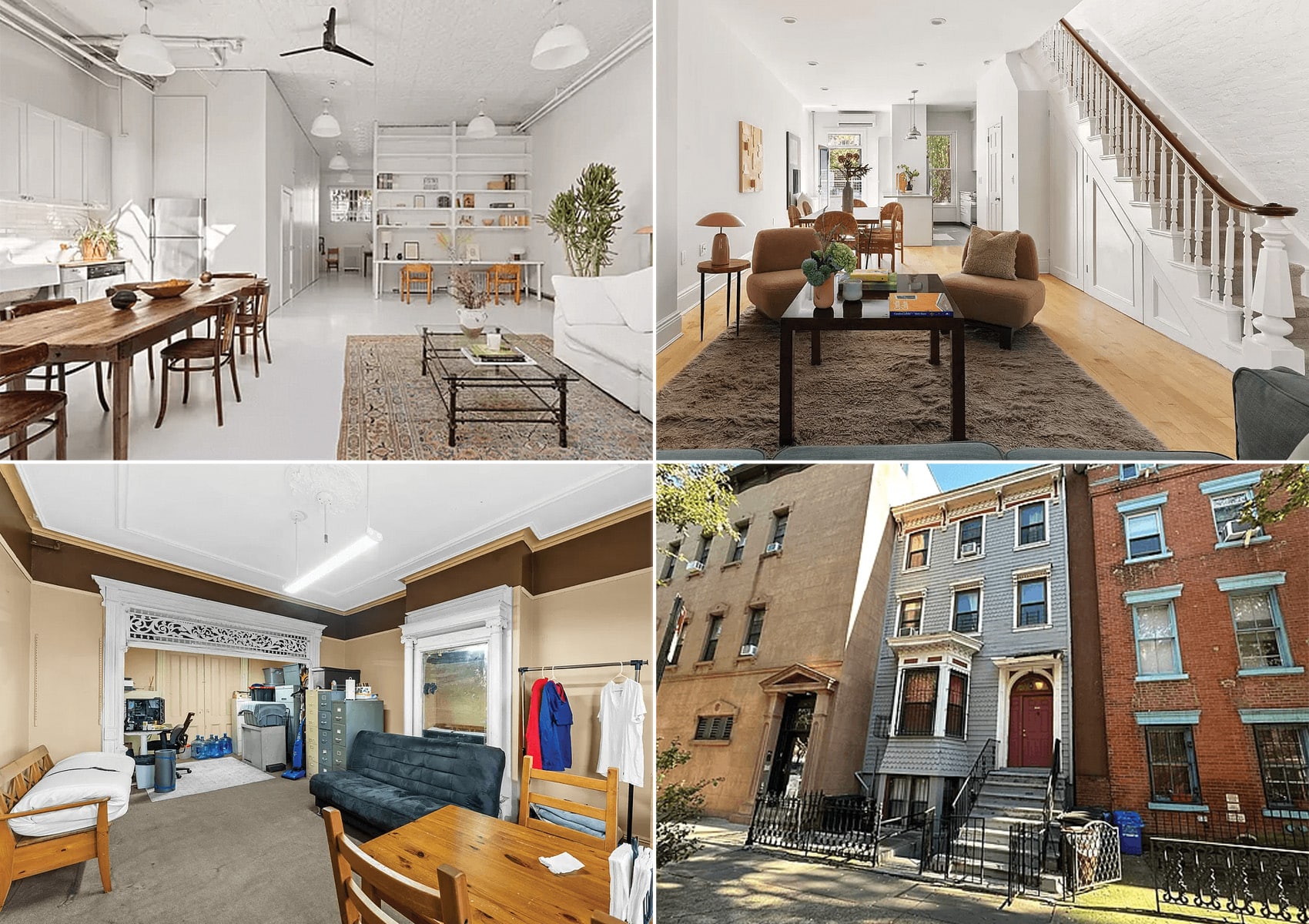
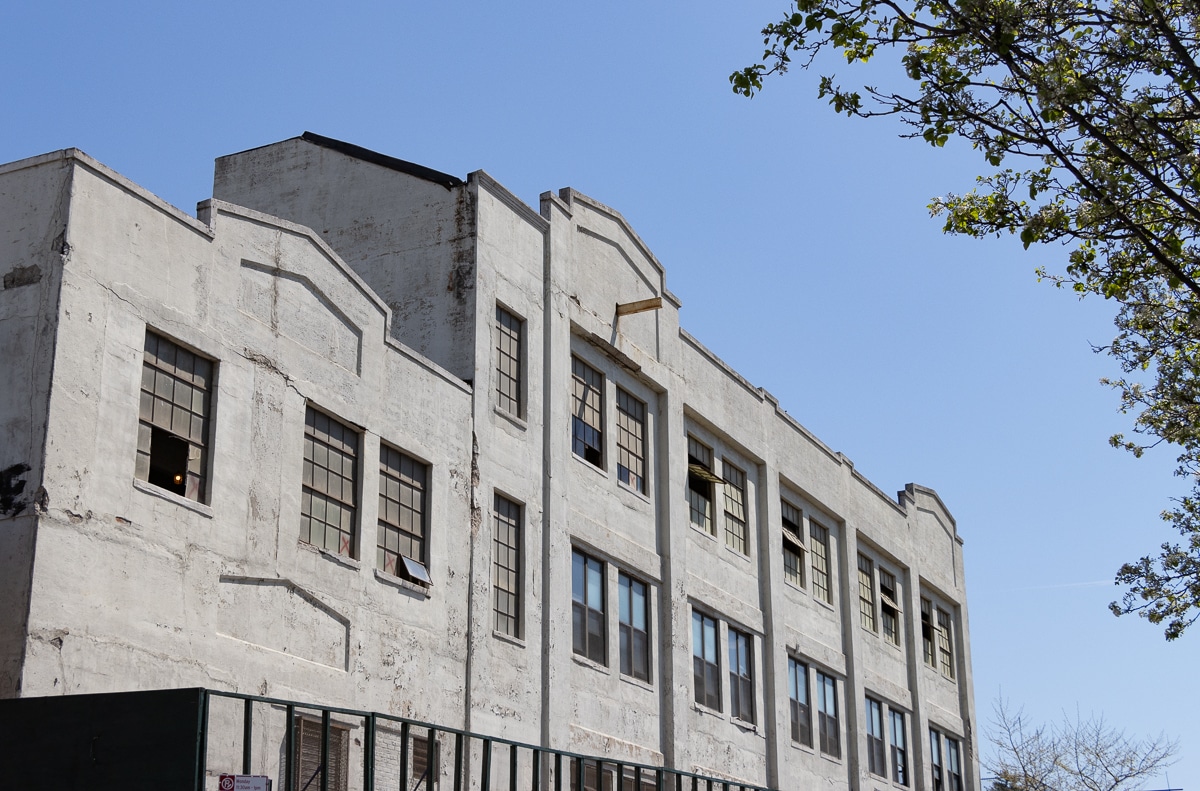
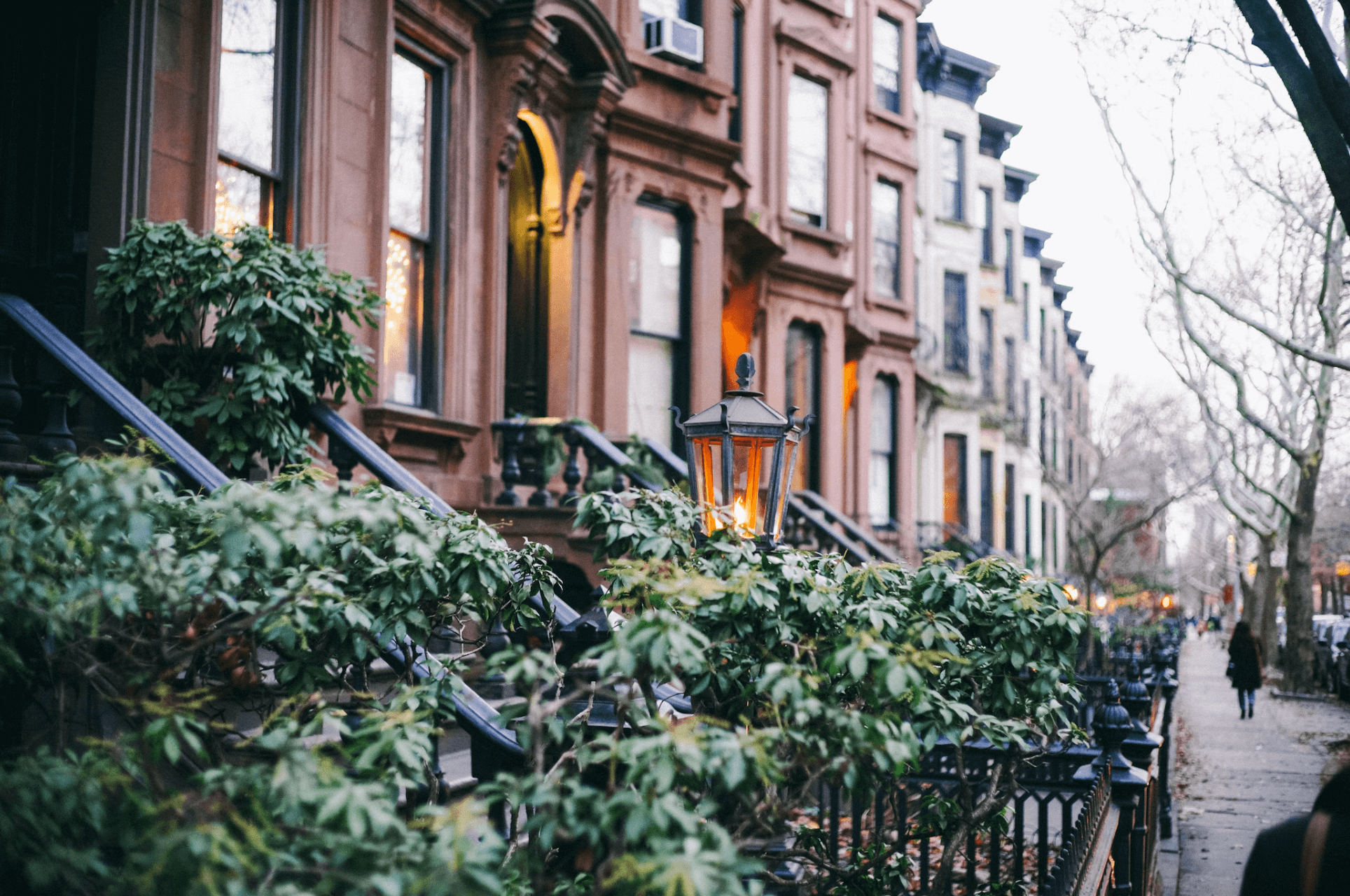
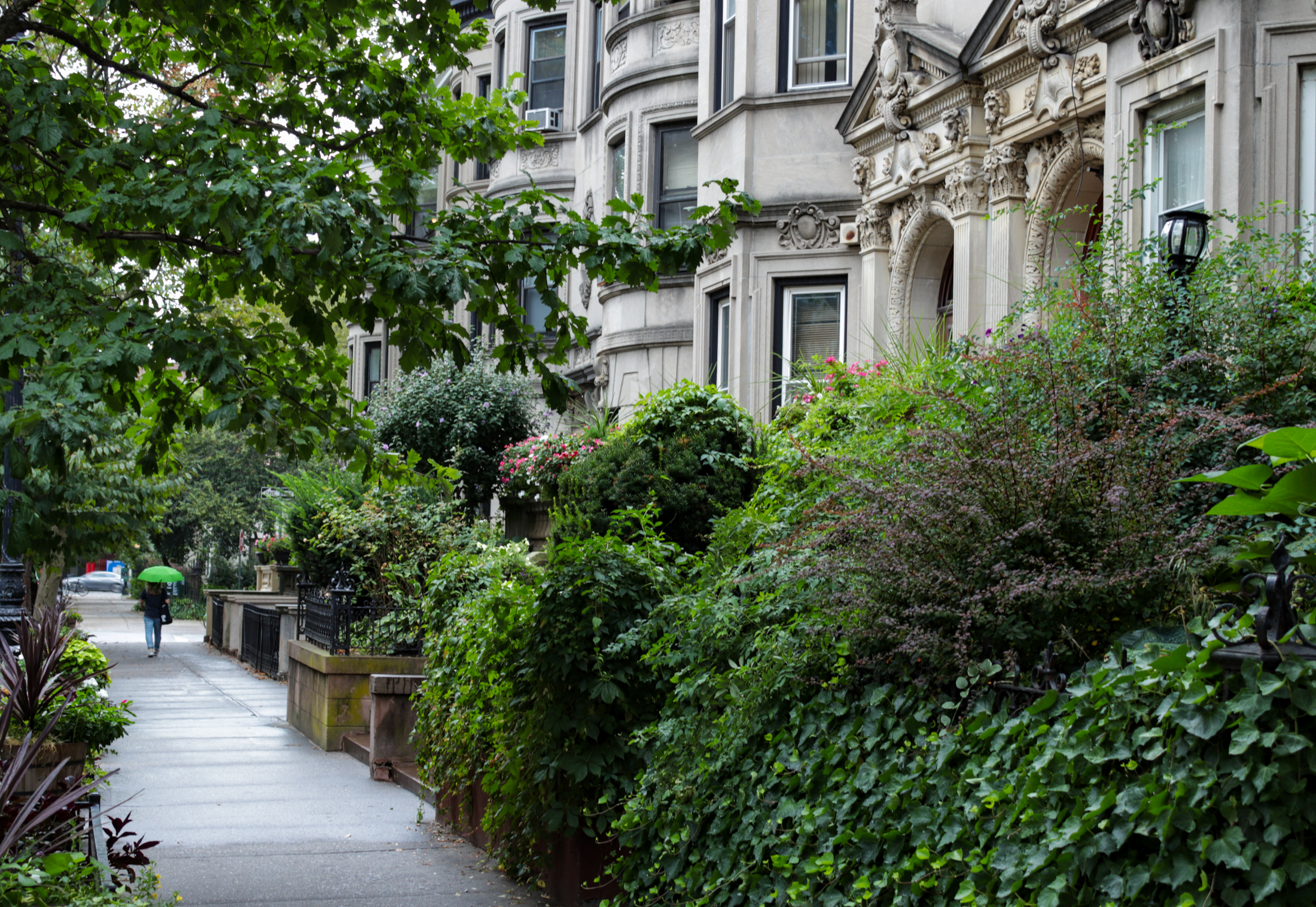



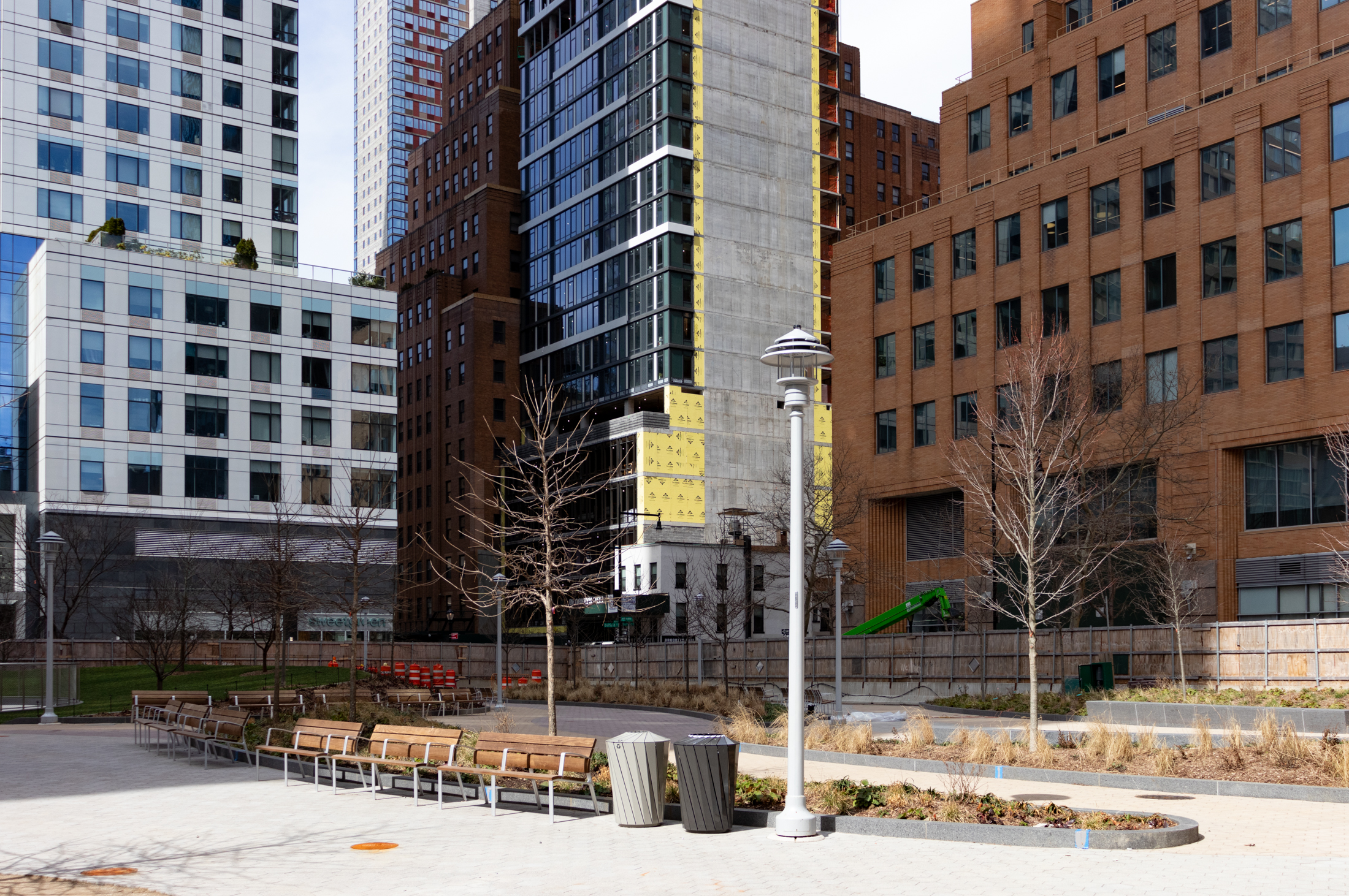
these buildings are striking. I know it’s a pipe dream but it would be nice if these could be salvaged.